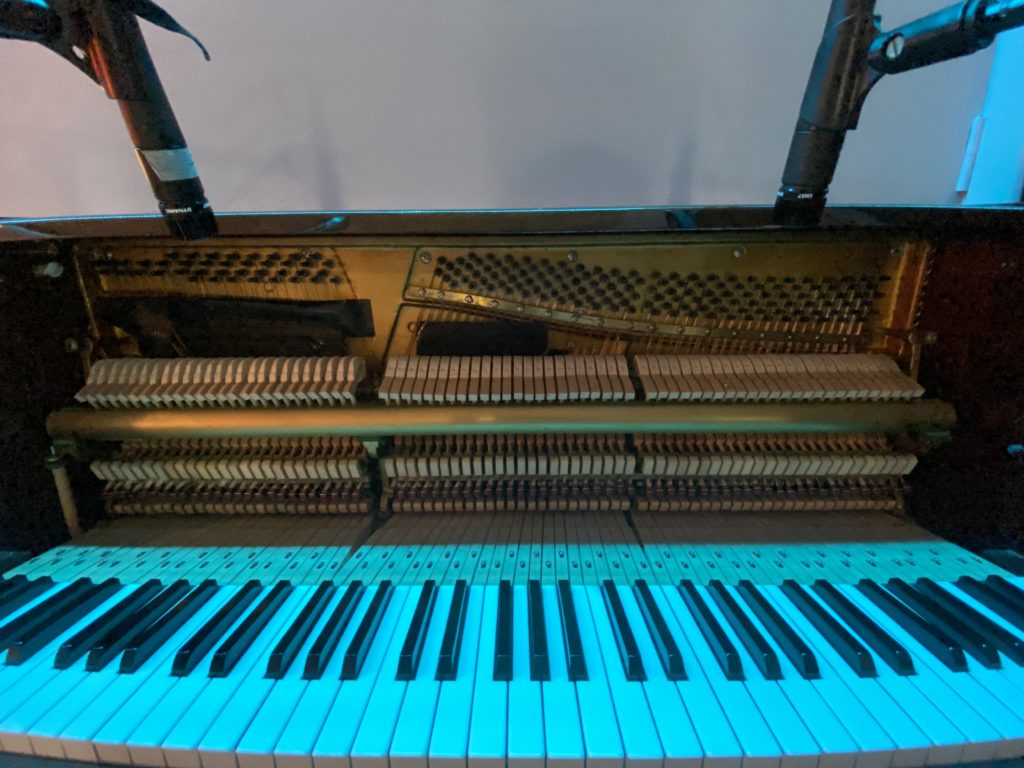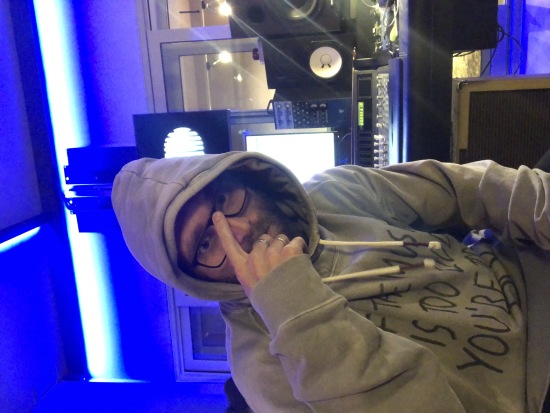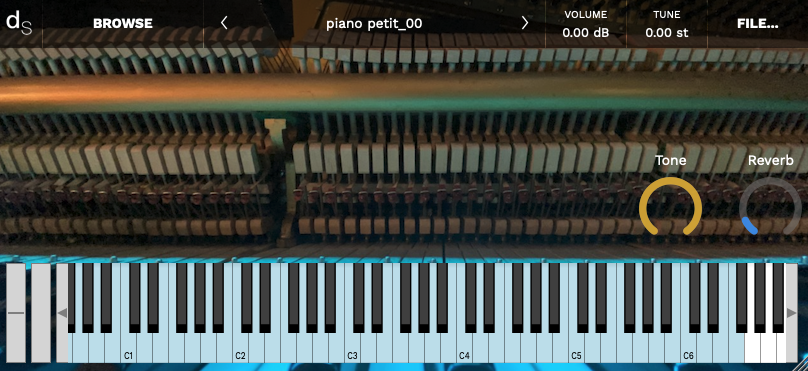Piano Petit – Chupi’s Piano
This is my first attempt to sample this little gem we have in the studio. I should have call it Chupi's piano, as a dedication or just because he prepared or treated the instrument


ByG Guevara
The story
This little piano we have at the studio has been out of tune for years,… we love how it sounds like this.
Chupi used to play it adding thumbtacks to the hammers or other metal pieces. I remember him trying to mute the strings with his hands, arms and some clothes, while trying to emulate the muted sound of a Clavinet. It was a funky track, groovy,… but he was not reaching what he was looking for till the moment he put some tape on the strings and we end up with that special sound.
Hope you love it as us. Respect the piano tuning and play it as it is. Unique.
Now it has three round robins for each note and a release. I should have recorded the notes with the sustain pedal on, but I didn’t, so I miss the original sustain,…
to be shared soon.
It has been recorded with a pair of SM57 and a AEA RPQ mic pre.
Interface

Reviews
A prepared piano...
This isn't an ordinary piano. It has been 'prepared', as they say, but apparently over time, and with various methods. The result is a piano with heaps of character, and many different sounds coming from the keys - some are bright, some sound muted, some are almost acoustic guitar-like, but every one obviously and definitely has a history.
The recording is very detailed, with 3 individual samples (3 round robins) for each note, plus individual release samples. When you play it, then the reason becomes very apparent - each note is different. Take A2 for example - it has a bright, hard edge to it, whereas age A#2 above it has more of a plucked sound with less brightness, and the G#2 below it has more of the sympathetic resonances of the piano in it. D3 has a bright edge to it again. C2 has a 'papery' muffled timbre, whilst the B1 below it has a lot of piano action noise and not very much string sound. And on it goes... The journey downwards from D1 is striking: D1 is muted and dark, whilst the C#1 just below it is pretty much a conventional piano sound! Trying to describe a prepared piano can rapidly turn into a marathon, so I'm just going to say that there's a lot of variety - the G3's strident sound is just one example of many!
So, this is, in every way, a collection of individual instruments, each playing a different note, in a different way, and the tuning is 'as found' rather than 'recently tuned'. Potentially a 'Marmite' sample pack: people will either love it or hate it - oh, and synthesists will marvel at how much variety you can extract from an acoustic instrument that is usually carefully tuned and tweaked for maximum uniformity (and they will probably wish that synthesizers were more like this!)
I'm a tricky reviewer, and I found a few minor strangenesses. The release samples loop, so after you have been playing, there is a fascinating carillon or swarm of release sounds thumping away in the background. The release samples themselves have a long tail of mostly noise, so it really needs a decay to fade this out. You can fix both of these by editing the release group XML so that it looks something like this:
group trigger="release" decay="0.75" loopEnabled="false" tags="2"
(you will need to add a chevron at the start and end as usual)
I added the tags="2" so that I could add a release volume control, where the binding would look like this:
binding type="amp" level="tag" identifier="2" parameter="TAG_VOLUME" ...
(Again with chevrons added)
What often happens when I go all 'technical' like this is that there will be a new revised version published, and all you will need to do is download that...
This piano has been used. It has heaps of character, and you may need to get past the idiosyncrasies to get to the uniqueness underneath. Prepared pianos are a fascinating way of challenging your preconceptions about what a piano should sound like, and how surprise and lack of uniformity can be enablers for creativity. You might like to contrast this with the way that effected/treated/processed pianos (pianos with effects added to them, like the classic phased Yamaha CP-80 sound from the 80s) are widely accepted, whereas prepared pianos can be seen as quirky. (and yes, I know that some people call 'prepared' pianos 'treated' pianos...)
Conclusion time! This is a detailed capture of a very special and unique instrument - the samples must have taken a lot of time, precision, persistence, and effort to record, and the result is almost the antithesis of the precisely edited, perfectly tuned, carefully adjusted 'studio' pianos that feature in so many sample libraries. Just one thought: you will instantly forget the sound of all of those polished perfect pianos, but you will never forget the sound of this one. That sort of singularity is rare! Cherish it!
Oh, yes, and thank Pianobook.co.uk for making this sort of individual instrument available to all!
Good job sampling
I think you did a great job sampling the piano. However, I am not a fan of the sound itself. Just my own personal taste. Especially the Note C4...(C3 in Decent sampler). It is a punchy spring sound that does not fit well.
It sounds upclose and good, but I would rather have a standard piano sound. If it was I would be in love with this library!Tape-Paper Piano?
The character of this piano is very different, and definitely unconventional. It's not as muted as a fully taped piano, and it's not fully open either. It really sounds as if it had pieces of paper around the strings - on some keys. Some keys sound more muted than others, some have a distinct "papery" texture (lower), and some sound as if they had nothing at all (mid-high). All-together, it sounds very interesting and funky, as the creator suggests, and the sampling is quite good.
You might also be able to tell that there are release trigger sounds, but I noticed that they contain a long tail full of white noise, so I recommend simply deleting the sample files if you find those annoying (right now you can't control their volume). You will get an error while loading, but you can simply ignore it.
